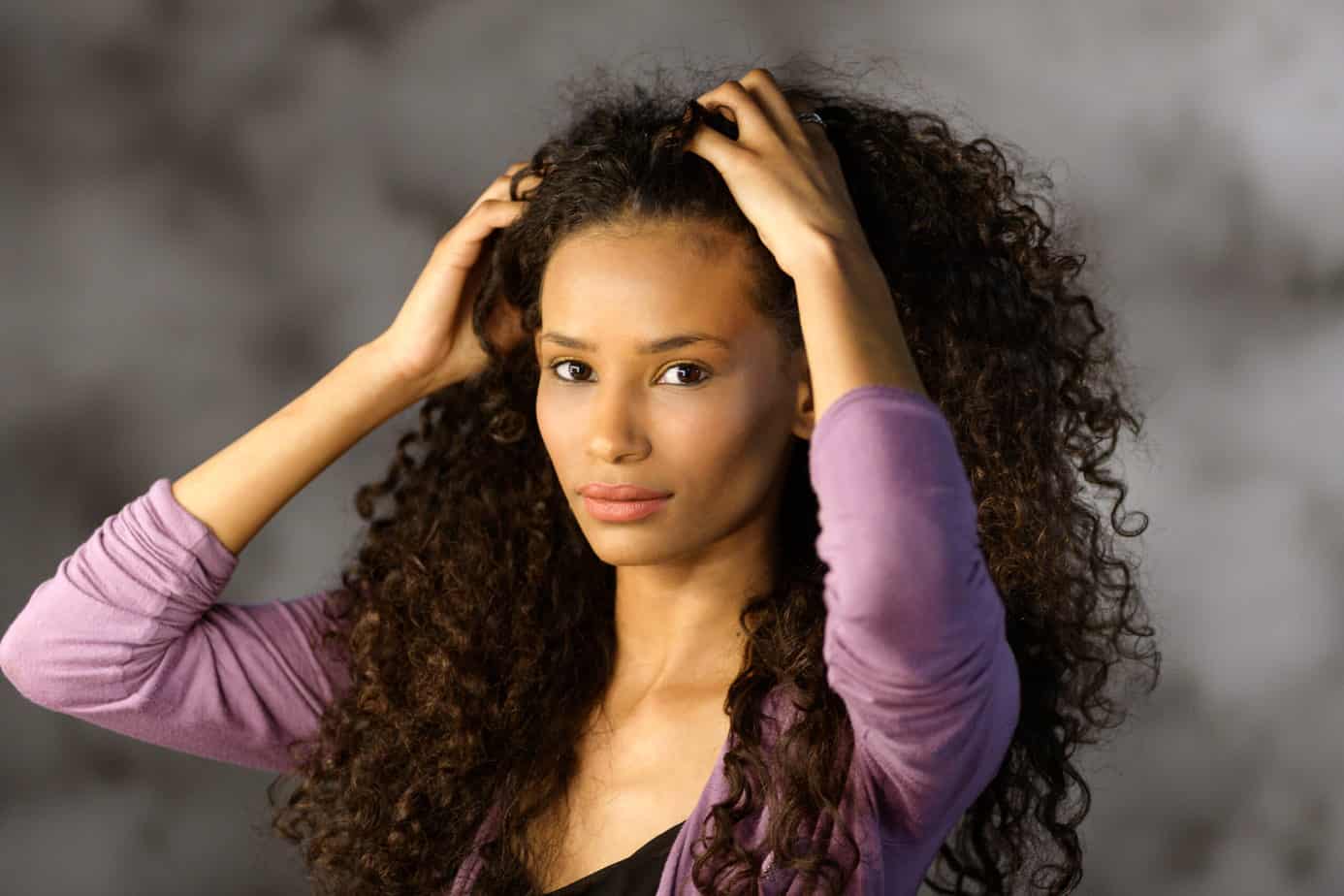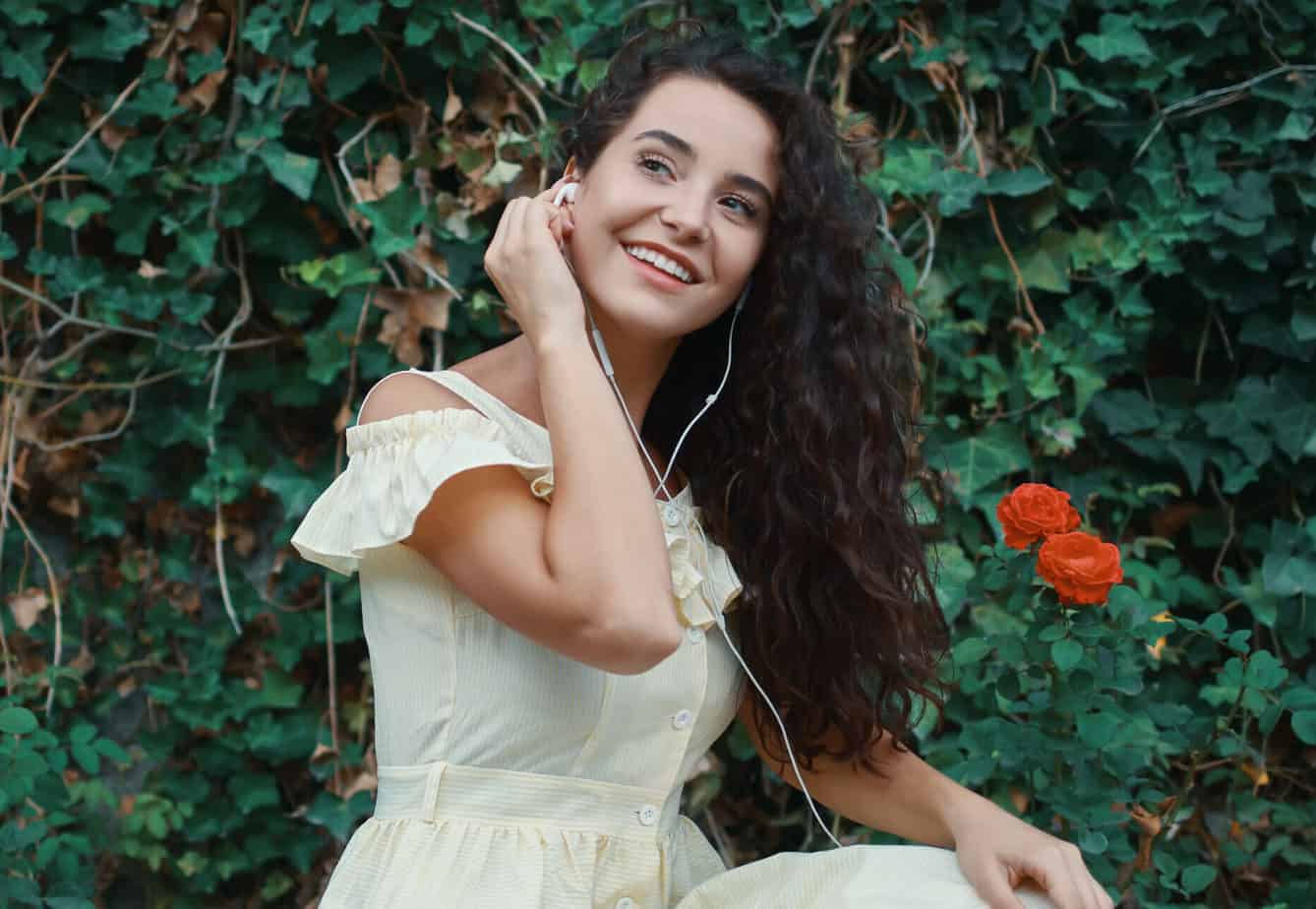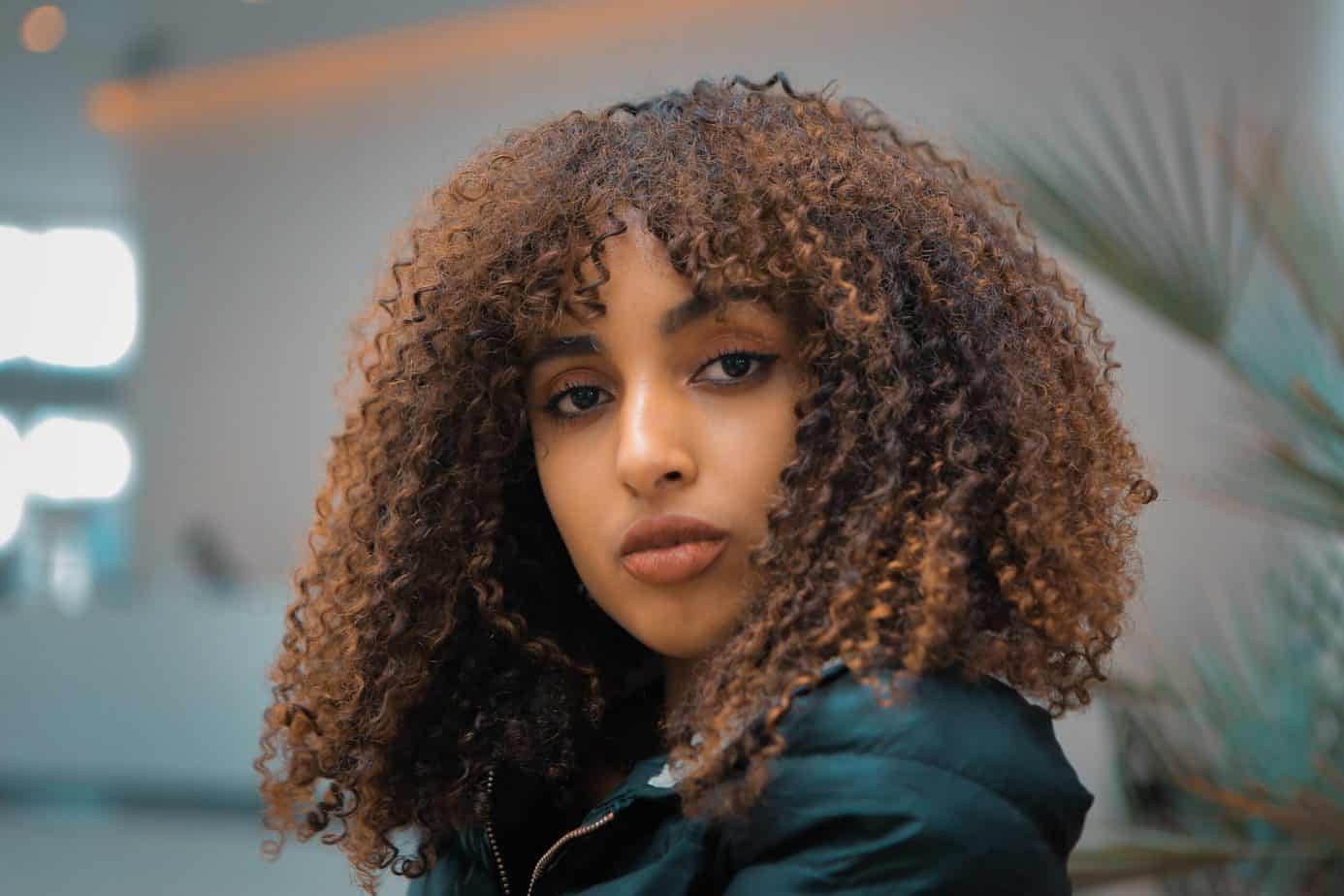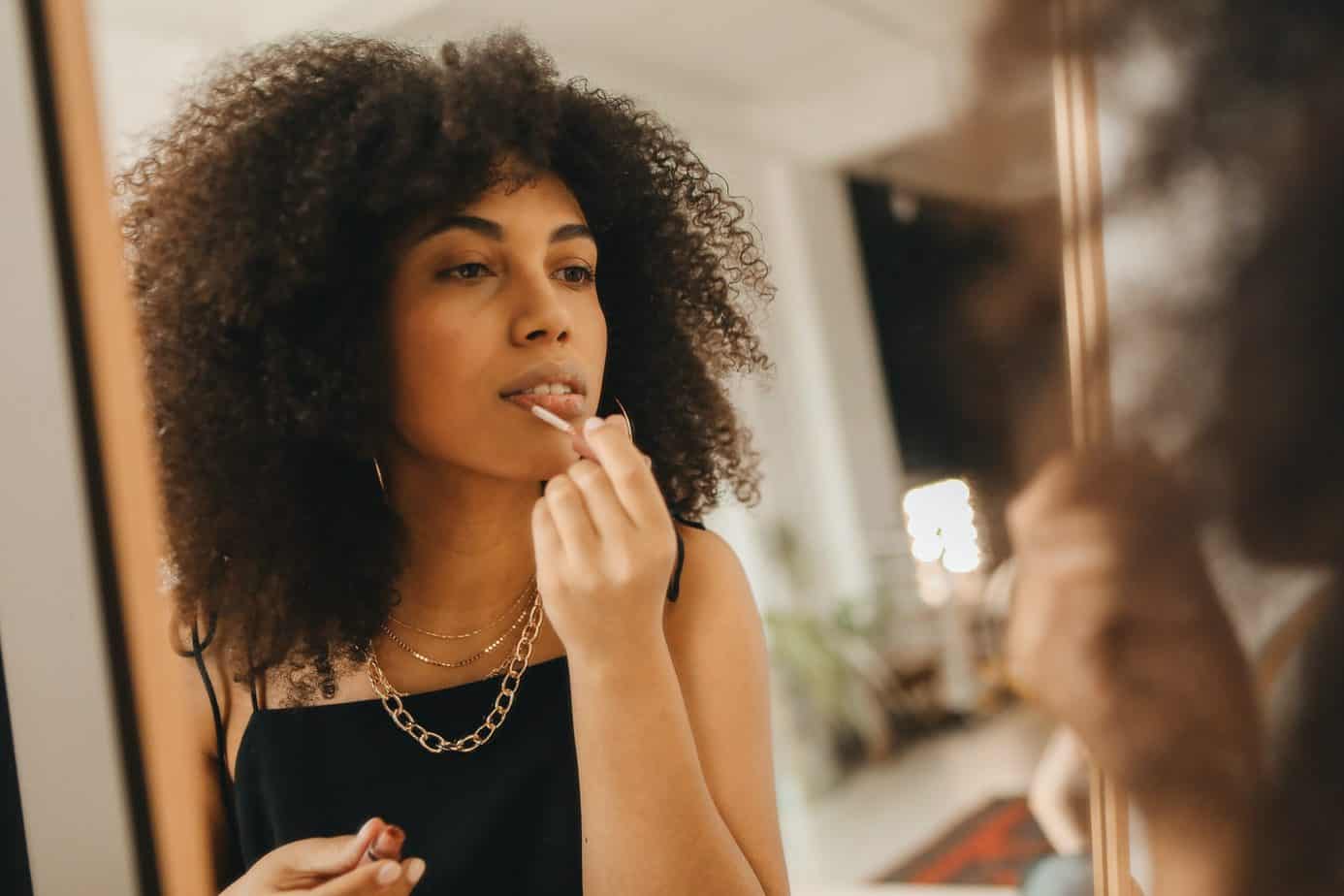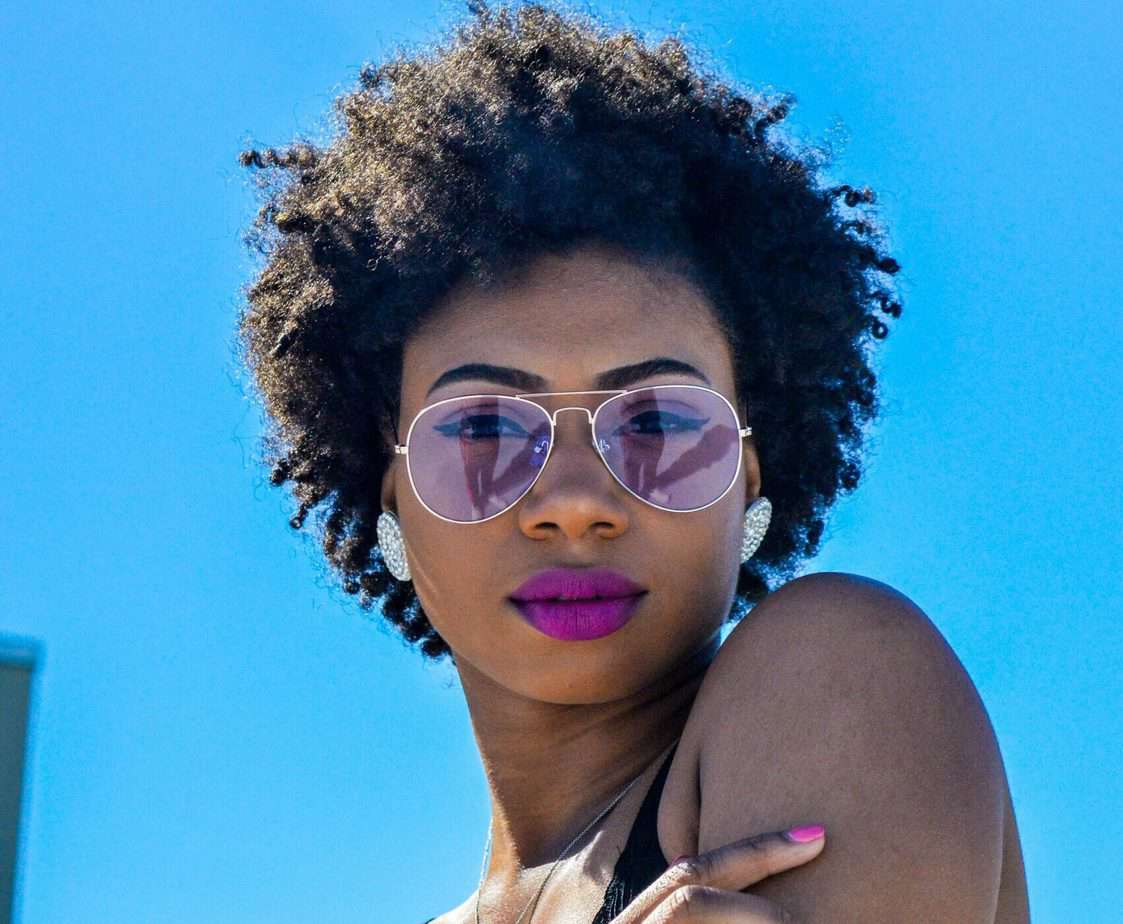Figuring out your hair type can be tricky, but necessary. Knowing your hair type can change the products you use, the way you color it, and the style you give it. What works for one hair type does not work for other hair types.
There are 4 different hair types with each type having 3 subcategories. This makes up 12 different classifications that your hair can fall into. Below we explain how to figure out your hair type, the best ways to style it, and the products you should use.
3 Ways to Classify Hair
Hair Type
There are 4 different hair types. These are straight, wavy, curly, and kinky. You can easily determine your hair type by looking at the way your hair naturally lays.
Straight hair has little to no curl in it. It is most often difficult to style and doesn’t hold curl or volume well. Straight hair is often very soft and shiny compared to other hair patterns.
Wavy hair has an S shape to it. This hair type is the easiest to style and the most manageable. It can hold curls very well or be straightened and stays that way easily.
Curly hair can have anywhere from a spiral pattern to a corkscrew pattern. Even with thin hair, curly hair looks voluminous when worn naturally. However, curly hair is usually very resistant to hair color, styling, and moisture.
Kinky hair has a corkscrew to Z formation. This hair type is extremely resistant, very dry, and can be easily damaged. However, if this hair type is worn naturally, you can achieve voluminous beautiful curls.
Hair Texture
Hair texture and the amount of hair you have are easily confused. Texture determines how thick the circumference of each individual strand is. There are three different classifications of hair texture. Fine, medium, and coarse.
To determine hair texture, you will need to run your hands through the hair to feel it and see how it naturally lays. Remember, simply grabbing the hair in a ponytail and seeing how much there is does not determine individual strand thickness.
Fine hair has a small circumference and tends to be softer, flowy, and lightweight. Whereas coarse hair has a large circumference and is rougher, stiff, and heavy. Medium hair tends to lie somewhere in the middle of fine and coarse.
Hair Density
The Density of hair describes how much hair is on your head as a whole. This is different from strand thickness because it is determining the number of strands on the head per square inch rather than analyzing each individual strand.
Hair density is characterized as a thin, medium, or thick. This can be determined by section your hair through the middle of your head. Separate the section and look to see if you can see the scalp.
With thin hair, you will be able to noticeably see the scalp at the part and partially through the hair. On the other hand, with thick hair, you should hardly be able to see the scalp except where it is parted. Medium hair density is somewhere in the middle.
Hair Type 1
| 1A | Straight / Fine | Hair is thin, soft, difficult to curl, and can be oily |
| 1B | Straight / Medium | Hair has volume but is difficult to curl |
| 1C | Straight / Coarse | Hair is thick, resistant to change, and could have minimal wave |
1A: Straight / Fine
Hair type 1A is hair that is straight and fine. This hair type is often thinner in density and difficult to style. Although this hair type is very shiny, it can become wispy and damaged easily with excessive heat styling and coloring.
1B: Straight / Medium
With a medium texture, this hair type has a little bit of volume. This hair type looks great naturally and doesn’t require a lot of styling with a good haircut.
1C: Straight / Coarse
Straight, coarse hair tends to be thicker than the other straight hair types and can have a slight bend to it. You often see this hair type in women who are fully grey. Due to the coarse texture, you can do a lot more to this hair without damaging it. However, the coarser the hair, the more resistant it becomes.
Pros of Straight Hair
This hair type naturally lays really well in most styles. You don’t have to fight with any natural curl pattern to get it to do what you want since it is growing out of your head straight. It doesn’t get any weird bends in it and generally stays where you want it.
It is shiny and silky. Due to each hair strand being straighter in texture, natural oils from your scalp can easily travel down the shaft of your hair. It also tends to keep this hair type really healthy since it is always moisturized from your natural oils.
Straight hair seems to grow really fast compared to other hair types. From all the extra moisture that straight hair receives, it tends to get fewer split ends. It also does not shrink when it’s dry like all other hair types.
Cons of Straight Hair
Volume is difficult to achieve. Since the hair lays flat on your head, you don’t get much lift with it. You need to use volumizing products to receive lift at the roots.
Curling your hair at all takes a lot of work. You often need to use at least two different types of holding products and take your time with small sections. Even with that, the curl may still fall out by the end of the day.
Straight hair can get too oily. Due to the hair being straight, natural oils can build up really fast. You may have to wash your hair more often than other hair types or put dry shampoo in daily.
Best Styles for Straight Hair
Due to straight hair never being super thick, long hair doesn’t usually work with it. Keeping it about armpit length or shorter works well. If you do decide to go longer, bangs and/or heavy face-framing gives it some movement and makes it easier to style.
Short bobs also work really well on straight hair. Since it is straight, you can get that perfect blunt shape that modern bobs have. A bob on straight hair also makes it look like it has a lot more volume than it actually has as well.
Straight hair does a really good job at pulling off edgy pixies. Especially for those that have hair that is a bit finer in texture. You can easily get that spiky, side-swept look with a lot of texturizing and paste for styling.
Product Recommendations
Volumizing products are a must for straight hair. Root pumps, mousses, and hairspray can make a big difference. Dry shampoo is also very important to soak up any excess oil on the scalp. Here are some great choices:
- Living Proof Dry Shampoo
- Joico JoiWhip Design Foam
- John Frieda Root Booster
- Boldify Hair Thickening Spray
- Kenra Volume Spray
Hair Type 2
| 2A | Wavy / Fine | Hair can easily be curled or straightened but could be oily |
| 2B | Wavy / Medium | Hair is voluminous and holds many different styles easily |
| 2C | Wavy / Coarse | Hair is usually frizzy, more difficult to style, and is thick |
2A: Wavy / Fine
Even though this hair type is fine, it can appear to have a little volume. Wavy, fine hair is very easy and quick to style into curls or straight and will hold it all day. It also stays healthy pretty easily due to it being slightly oilier than medium or coarse hair.
2B: Wavy / Medium
This hair type has great volume but is still easy to manage. This is probably the most ideal hair type to have. It can easily be styled any way you would like, looks like a lot of hair even if it is actually thin, and stays healthy fairly easy.
2C: Wavy / Coarse
Wavy, coarse hair is usually thick and can be slightly more resistant to styling. You will need to style this hair type in small sections and take extra time on each section. Even though this hair type still holds style extremely well and you shouldn’t have to do it again for a few days.
Pros of Wavy Hair
Wavy hair is the most versatile hair type. You can style it straight, curly, or natural and it will hold that style until you do something else with it.
It appears to have volume, even if it is not thick or coarse. Since it has a natural S shape to it, the hair gets a little more volume straight out of the scalp. Even when wearing it straight, you still see lift at the root.
This hair type works with almost any haircut. It doesn’t shrink a whole lot like curly hair, so you can wear it short. Also, since it looks to be voluminous and has more texture you can wear it really long.
Cons of Wavy Hair
It can get frizzy. Wavy hair is pretty unpredictable on where it is going to go or how it will lay, so it can get messy and cause frizz. You want to use some sort of smoother or anti-humidity product of wavy hair.
Wavy hair always needs some sort of styling. Since it can be unpredictable, not every section of your hair is going to wave the same way as other parts. Some parts may be wavier than other sections, so you’ll either need to make it curlier or straighter in some sections.
Weather can change the look of your hair real quick. If there is a lot of humidity or rain, your natural wave will start coming through. The best bet is to work with your natural curl if it is wet where you are. Wet weather actually will amp up your natural wave.
Best Styles for Wavy Hair
Wavy hair can be worn in multiple haircut styles because it is so easy to style. That means you’ll be able to have a sleek straight bob, edgy pixie, or long layered hair. However, you may have to always style it in certain haircuts.
To wear your wavy hair naturally, layers are a must. Especially for those with uneven wave patterns or long hair. Layers take weight away giving it more ability to bounce up. You may still need some texture spray and curl cream, but the layers will help give it shape.
Super textured, short haircuts also work well on wavy hair. You can rock your natural wave by simply running some mousse throughout or you can add some textured curls to give it a more volumized look.
Product Recommendations
Some sort of serum or oil is key to keeping wavy hair looking shiny and smooth. Depending on how you style it, you may also want a smoother, mousse, curl enhancer, and texture spray. Here are some product choices:
- John Frieda Frizz Ease Hair Serum
- Kerastase Discipline Keratine Blow Dry Primer
- AG Natural Cloud Volumizing Mousse
- Moroccanoil Curl Defining Cream
- Oribe Dry Texturizing Spray
Hair Type 3
| 3A | Curly / Fine | Has a definite S shape to a spiral shape and is typically frizzy |
| 3B | Curly / Medium | Hair has a spiral shape and has definite volume with some frizz |
| 3C | Curly / Coarse | Hair could be spiral to corkscrew and is very resistant to change |
3A: Curly / Fine
Fine hair that is curly has a definite S shape throughout the whole head and could possibly have a spiral shape in parts. This hair type tends to be frizzier than others and needs lots of lightweight anti-frizz products. Although this hair type is fine, you may appear to have a lot of hair.
3B: Curly / Medium
This hair type has a definite spiral shape and looks to have lots of volume without being poofy. You may see some frizz if it is not properly styled. Curly, medium hair can still be straightened fairly easily but may take some time.
3C: Curly / Coarse
Curly hair that is coarse has a spiral to corkscrew shape. This hair type is very resistant to any change. That includes coloring, heat styling, and hair product. However, people who wear this hair type naturally get a lot of positive attention for it.
Pros of Curly Hair
It always has volume. Even when you don’t have much hair and it is very fine, it looks to be a lot more than it is. The curl lays on top of each other giving it more bounce and the appearance of more mass.
This is a wash-and-go hair type. You don’t need to blow dry it or add curls. It won’t lay flat on your head like straight hair when it’s wet and letting it dry naturally actually minimizes frizz.
Curly hair draws attention. Since curly hair tends to be larger in mass, people notice it and they love it. Everyone loves the idea of having a lot of voluminous hair that they don’t have to do anything to. So when they see you with your curly hair, they can’t help but envy you.
Cons of Curly Hair
Curly hair is often dry. Natural oils can’t easily travel down the hair strand like they can with straight hair or even way hair. A lack of natural oils throughout the hair causes it to become dry. You will need lots of oil-based products to create moisture.
It is frizzy without styling products. Have you ever seen a curly-haired person brush out their dry hair? It turns into a giant frizz ball. The same thing happens if you don’t put anti-frizz products in it.
There are only a few haircuts that work well with curly hair. Curly hair gets bulky at the places that it is cut. For example, if you have a one-length haircut, it will be bulky and triangular at the bottom.
Best Styles for Curly Hair
As mentioned above, there are few hairstyles that you can pull off with curly hair. Due to how much curly hair shrinks, short haircuts do not usually work well. A shoulder-length bob could easily turn into a chin-length triangle when dry.
The best haircut for curly hair is to keep it fairly long and very layered. The layers give you different lengths in the hair for curls to lay at. This gives you a rounder, voluminous shape. Compared to if it was one length, all the weight of the curls would sit at the bottom of the cut.
People with finer curly hair could pull off a cute pixie. However, you need to go really short with it to cut past the curl. Or, do a longer pixie so that your curl has room to shrink and not stick straight up.
Product Recommendations
Anti-frizz products and curl definers are key in styling curly hair. Especially if you plan to wear it naturally. If you are trying to straighten your curly hair, a strong smoother is needed and good heat protectant. Here are some good products to try:
- Reverie Milk Anti Frizz Leave-In Treatment
- Briogeo Curl Charisma Leave-In Defining Cream
- As I Am Coconut CoWash
- Aveda Smooth Infusion Glossing Straightener
- Living Proof Restore Instant Protection Spray
Hair Type 4
| 4A | Kinky / Fine | This hair type is very rare and has a corkscrew shape |
| 4B | Kinky / Medium | Hair has a Z pattern, is very resistant to styling, and normally dry |
| 4C | Kinky / Coarse | Hair is very frizzy, difficult to style, and drier than any other hair type |
4A: Kinky / Fine
It is really rare to find someone with kinky hair that is fine. It usually is a corkscrew shape rather than a Z shape. Even though this hair type is fine, it still has amazing volume and shape.
4B: Kinky / Medium
Kinky hair that has a medium texture has a Z shape pattern. It is almost impossible to get this hair type completely straight and is very dry. It is best to learn how to style this hair naturally and rock it.
4C: Kinky / Coarse
This hair type is usually very thick in density and extremely difficult to style. Most people with this hair type either learn to style it naturally or have it done by a professional. It is very dry, frizzy, and has a large mass.
Pros of Kinky Hair
You can achieve ultimate volume with kinky hair. This is the only hair type that can achieve the afro look. With proper styling, you can make this hair as voluminous as much as you want it to be.
This hair type hardly ever needs to be washed. Since it is drier than any other hair type, there isn’t really a need to wash it with shampoo unless it starts smelling or becomes visibly dirty. You’ll save a lot of money on shampoo.
Kinky hair allows you to do some pretty edgy, fun styles. As mentioned before, this is the only hair type that can be styled into an afro. Who doesn’t love huge, round hair? Also, a lot of people with this hair type use fun braids and twists to keep it manageable.
Cons of Kinky Hair
This hair type tends to be very poofy. If not styled properly or played with too much, it can look like a puffball. You need a lot of product to tame down this hair and get it to go where you want it. You also need a lot of restraint from touching it all the time.
There are a limited amount of styles you can do with kinky hair. Just like curly hair, if cut incorrectly, the shape of your hair can be very unflattering and difficult to manage.
Kinky hair is very dry and prone to breakage. Natural oils from your scalp almost never get completely through the length of kinky hair. With little moisture in it naturally, heat styling and strong coloring can easily damage it.
Best Styles for Kinky Hair
Kinky hair shrinks to almost half its actual length. It’s best to keep it as long as possible unless you are going for a pixie-type style. Layers are also a must for all haircuts with kinky hair.
With kinky hair that is long, rounded layers are important to give it a nice shape. Without layers, all the weight of your hair sits at the bottom and creates a triangular shape. Depending on where you want it to have a rounder shape is where you want the layers to start.
If you simply want some roundness on the ends, the layers should stay longer. If you want a rounder shape throughout the whole head, the layers should be shorter. If you want a cute pixie cut or afro shape, the hair should be the same length from the head all over.
Product Recommendations
Oils, serums, creams, and moisturizers are kinky hair’s best friends. These products keep it from getting too poofy and give it an amazing shine and softness. Some products to try out are:
- Royal Locks Curl Cream Gel
- Pure Haitian Black Castor Oil
- Miss Jessie’s CoWash
- Txtr Strengthen + Restore Moisture Mask
- Qhemet Biologics Amla & Olive Heavy Cream
FAQ’s
Question: How do you find out what hair type you have?
Answer: Take a single strand of hair from your hairbrush. Visually look at the strand to see what pattern it is. If it has no bends, it is straight. Whereas if it is a coil, it is curly to kinky. To find out if it is fine to coarse, roll the strand around in your fingers. If you barely feel it, it is fine and vice versa.
Answer: Take a single strand of hair from your hairbrush. Visually look at the strand to see what pattern it is. If it has no bends, it is straight. Whereas if it is a coil, it is curly to kinky. To find out if it is fine to coarse, roll the strand around in your fingers. If you barely feel it, it is fine and vice versa.
Answer: The 4 hair types are Straight, Wavy, Curly, and Kinky. These hair types are then broken down into subcategories of fine, medium, and coarse.
Answer: Straight, fine hair is the rarest hair type. Most people do not have straight hair naturally. There is usually some sort of bend found in people’s hair that makes you the wavy hair type.
Answer: Wavy hair is the most versatile hair type. It can easily be straightened or curled and will hold that style all day. This hair type typically takes a short amount of time to style and requires little involvement.
What are the differences between hair texture and hair density?
Hair texture describes the thickness of each individual hair strand. Hair density describes how much hair is found in one square inch. The texture will tell you if each hair is fine, medium, or coarse. Whereas hair density will tell you if your hair as a whole is thin, medium, or thick.

